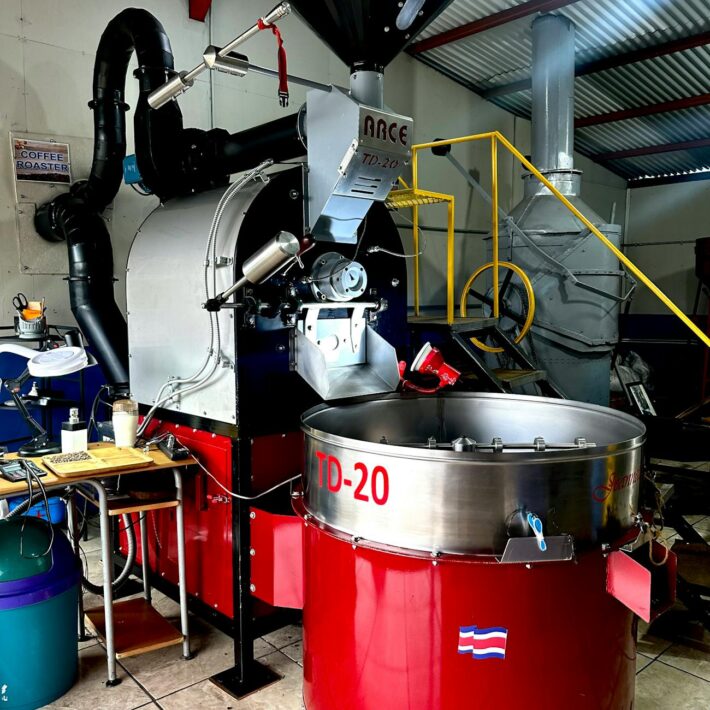3D Printed Prosthetics Business Ideas to Start in 2024

Contents
3D Printed Prosthetics Business Ideas to Start in 2024
The world of prosthetics is rapidly changing, thanks to advancements in 3D printing technology. As we navigate through 2024, more entrepreneurs are finding opportunities in this dynamic niche. From creating affordable prosthetic solutions to adding a personal touch through design, there's no shortage of innovative ideas to explore. Let’s dive into the exciting business opportunities within 3D printed prosthetics!
Business Ideas for 3D Printed Prosthetics
As the demand for customized, effective, and affordable prosthetic solutions continues to grow, numerous business avenues await those ready to capitalize on this trend.
Custom Prosthetic Limb Production
Imagine a prosthetic limb that's tailored just for you. Custom prosthetic limb production utilizes 3D printing to create prosthetics that fit perfectly with the user’s anatomy and lifestyle. The process entails digitally scanning the individual's limb, designing a highly personalized prosthetic limb, and printing it using flexible materials that mimic human tissue.
This approach eliminates the need for long wait times associated with traditional manufacturing. Moreover, it often enhances comfort and mobility for users. Offering services that cater to clients across various age groups can create significant impact while fostering a loyal customer base.
Prosthetic Socket Design Services
One of the less discussed but vital aspects of prosthetics is the socket design—where the device interfaces with the user's body. By focusing on specialized 3D socket designs, you can innovate solutions that improve comfort and functionality for wearers. These designs can take into account various user activities, from athletics to everyday tasks.
The custom socket service can include a variety of materials and aesthetics, allowing users to personalize their prosthetics even further. For someone who values comfort in a wearable device, this service will stand out.
Affordable Prosthetics for Low-Income Families
Access to high-quality prosthetic solutions can be a significant barrier for low-income families. Venturing into the realm of affordable prosthetics addresses this gap by providing cost-effective alternatives that don’t compromise quality.
A well-designed model created through 3D printing greatly reduces production costs. By establishing partnerships with non-profits or healthcare providers, your startup can work towards offering accessible prosthetic solutions that make life easier for many.
3D Printed Prosthetic Aesthetics
Worn prosthetics often lack personality and can even affect user confidence. Imagine creating a line of aesthetically pleasing 3D printed prosthetics that allow wearers to express their individuality. With endless color and design options, users could choose styles that resonate with their personality.
This business can tap into custom designs that reflect hobbies, sports, or artistic styles. By showcasing finished products on social media, your brand can inspire conversations around diversity and acceptance while serving this underserved segment.
Prosthetic Accessories and Add-Ons
The market for prosthetic accessories is burgeoning. Accessories such as grips, straps, and decorative elements can significantly improve the functionality and appearance of prosthetics. 3D printing provides endless customization options—all while keeping production affordable and fast.
Consider offering unique designs specific to different activities: hiking, sports, or daily wear. This not only enhances the utility of basic prosthetic devices but transforms them into a reflection of the wearer’s life.

Photo by Thirdman
3D Scanning Services for Prosthetics
Accuracy is crucial when designing prosthetics that must fit snugly against the body. By offering 3D scanning services, your business can ensure that prosthetics are made to match the anatomy of each individual user perfectly.
This process could be synonymous with high-tech accessibility, where utilizing portable scanning devices in clinics or even mobile services can set you apart. Reduced timeframes for creating customized prosthetics are not just a win for you but significant relief for patients awaiting mobility solutions.
Rehabilitation and Training Programs
Don't just stop at providing the prosthetic—consider engaging other aspects of care such as rehabilitation and training programs. Offering such initiatives can assure users that they are not just receiving a device but ongoing support.
These programs could integrate advanced techniques to help users adapt to their new prosthetics, with 3D printed tools designed for pain relief, enhancing mobility, and overall physical health. A partnership with physical therapists can bring added credibility and value to your offerings.
Prosthetics for Animals
The potential market for animal prosthetics is vast. Just like people, pets and working animals sometimes need assistive devices for better quality of life. You could focus on designing and building 3D printed prosthetics for animals that are not only effective but also comfortable for them.
This niche field is less saturated than human prosthetics, allowing you opportunities to innovate and create a loyal customer base within pet and animal welfare communities.
Collaborations with Healthcare Providers
Partnering with hospitals, clinics, and rehabilitation centers can amplify the reach of your prosthetics business. Collaborations can facilitate referrals and offer institutions the opportunity to provide 3D printed solutions that are personalized for their patients.
Establishing trust with healthcare providers will require demonstrating the effectiveness and reliability of your products while collaborating on patient care programs.
3D Printing Workshops and Educational Programs
Education is indispensable for spreading awareness about the benefits of 3D printed prosthetics. Conduct workshops that showcase the design and printing process, leading to hands-on experiences. Such educational initiatives can build communities of enthusiasts and support networks for potential clients.
Moreover, by informing healthcare professionals about the upcoming trends in customized prosthetics, you’re positioning yourself as an authority in the field.
Prosthetics Research and Development
Research and innovation are at the core of any sustainable business model, especially in healthcare. Exploring newer materials, designs, and technologies for prosthetic solutions can distinguish your brand as a leader in progressive 3D printing techniques.
Offering R&D opportunities within your enterprise not only propels your business but attracts potential investors or partnerships aimed at innovation and improving healthcare solutions.
Online Marketplaces for Custom Prosthetics
With the rise of e-commerce, establishing an online marketplace specifically for custom prosthetics can streamline the connection between creators and customers. This platform should focus on the individuality of offered products, where clients can view designs, specifications, and possibly engage in custom orders.
Creating a user-friendly interface while providing ample information about each product will enhance the shopping experience.
Mobile Prosthetics Services
Not everyone is able to visit clinics for fittings and maintenance. By integrating mobile services, your business can bring the prosthetic to the user’s door. This flexibility is invaluable for securing a base of satisfied clients who appreciate the convenience.
Consider creating partnerships with local clinics to offer mobile fitting services, ensuring that users can receive immediate assistance built around their schedules.
Social Media and Community Building
Building a community around 3D printed prosthetics can inspire hope and camaraderie among users. Engage your audience across social media platforms, sharing stories, testimonials, and informative content that promotes awareness about the significance and benefits of prosthetics.
Through active engagement and showcasing real stories, your brand can build lasting connections, authenticity, and trust.
Logo and Brand Identity for 3D Printed Prosthetics Startups
A strong logo and cohesive brand identity are crucial for any new venture. For businesses in the 3D printed prosthetic field, an identity that resonates trust and innovation can help build customer loyalty.
Creating a Memorable Brand Identity
Your brand's identity should communicate your core values and mission while appealing to your target audience. Consider marketing concepts that emphasize inclusivity, creativity, and support within your brand's messaging.
Focus on consistency in branding across all platforms to establish recognition and build a community of advocates for your products.
Logo Design Strategies for Prosthetic Businesses
A well-designed logo serves as the face of your brand. It should be clean, professional, and reflective of the product you offer. Incorporate elements that indicate technology and care, perhaps through imagery or innovative fonts.
Equally important is adaptability; your logo should translate well across various mediums, whether it’s a website, social media, or printed materials.
Brand Messaging and Positioning
Finalize your messaging strategy around the transformative aspects of 3D printed prosthetics, emphasizing experience and understanding. Develop statements that challenge existing norms and promote the benefits of choice, affordability, and customization.
Be consistent in voice, tone, and messaging throughout all forms of communication to present a united front.
Conclusion
The potential in the 3D printed prosthetics domain is vast and valuable. With innovative ideas catering to diverse needs, entrepreneurs can make positive impacts while achieving substantial business success. For small business owners and aspiring entrepreneurs, this industry is not just about creating functional devices—it's about revolutionizing lives. Now's a great time to take action and explore what you can contribute to this growing field. Embrace the journey into the world of 3D printed prosthetics and get started today!

As our Chief SEO & Branding Strategist, Robert Ellison is a digital marketing visionary with over 25 years of experience transforming brands through smart, data-driven SEO and impactful storytelling. Known for his expertise in aligning technical SEO with authentic brand narratives, he leads our team in creating strategies that boost search rankings while building strong, sustainable brand identities. A trusted advisor and frequent industry speaker, Robert combines deep technical knowledge with creative insight, helping our clients not only reach the top of search results but also genuinely connect with their audiences.








